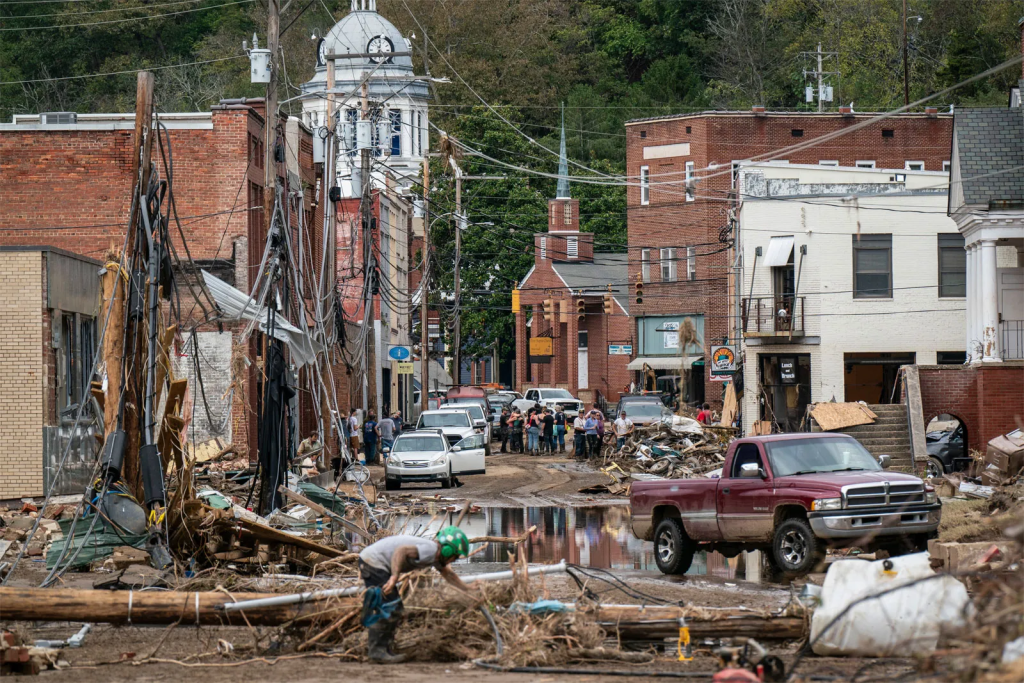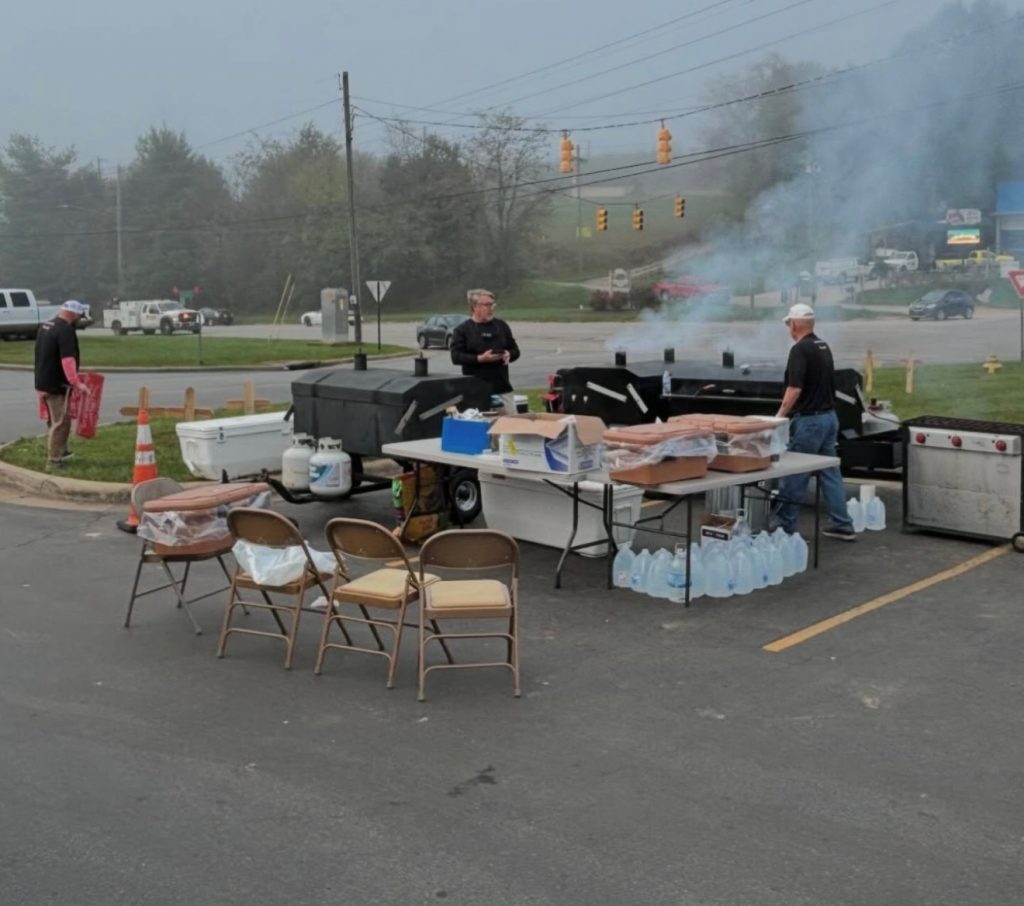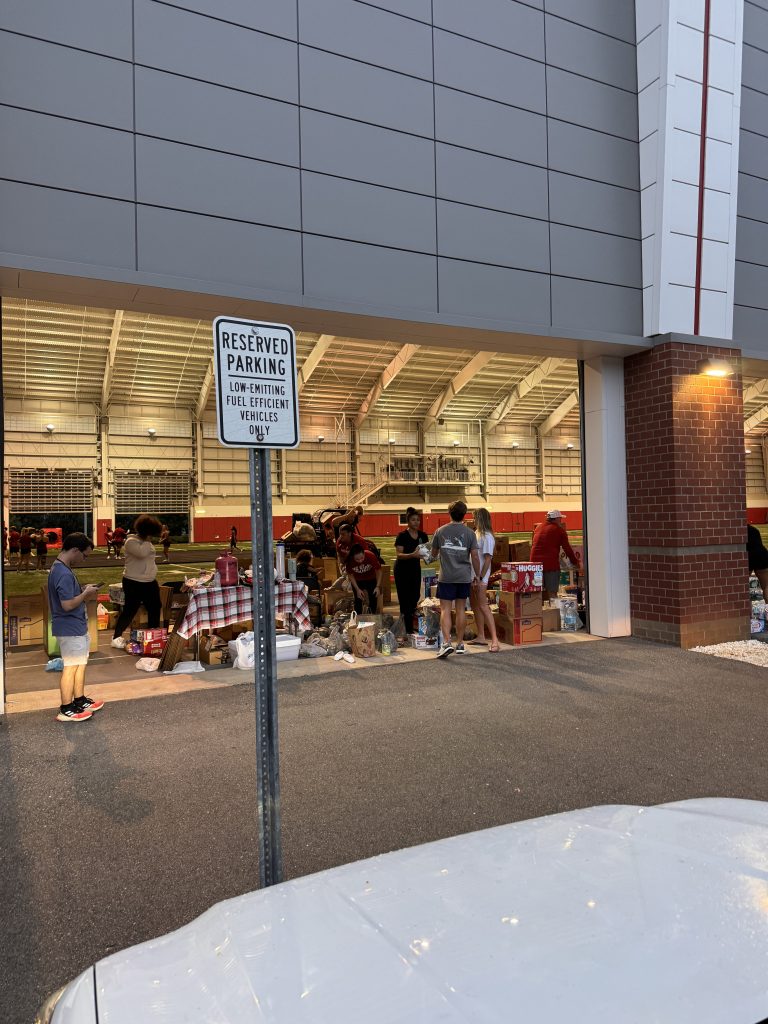(by Jagrit Tulsyan)
Hurricane Helene, a Category 4 storm, made landfall on Florida’s Big Bend on September 26, 2024, and its impact was felt across several states, particularly in Western North Carolina. Here’s a detailed look at the events and their effects on the region:
Events and Impacts:
– Storm Details: Helene brought maximum wind speeds of 140 mph and moved rapidly north-northeast at about 30 mph[1][5]. As it weakened into a tropical storm near Macon, Georgia, it continued to cause significant damage due to heavy rainfall and strong winds[1].
-Flooding and Landslides: The storm dumped massive amounts of rain, leading to catastrophic flooding and over 1,400 landslides in Western North Carolina[1][3]. This region experienced some of the worst natural disasters in its history, with areas like the Appalachian Mountains receiving 20 to 30 inches of rain, causing record-level flooding in rivers and streams[1].
– Fatalities and Damage: In North Carolina alone, Helene caused at least 96 confirmed deaths, with many more across other states, totaling 249 fatalities[1][3]. The economic impact was staggering, with estimated damages and recovery needs exceeding $53 billion in North Carolina[3][6].
– Infrastructure Disruption: The storm severely damaged water and sewer systems, roads, and bridges, cutting off communities from essential services and communication[6]. Thousands of homes were destroyed or severely damaged, leaving many without access to basic necessities like clean water and electricity[6].
Aftermath and Ongoing Challenges
– Wildfires: Months after the hurricane, Western North Carolina faced another challenge: wildfires. The debris and dead trees left by Helene became highly flammable, contributing to significant wildfires in the region, such as the Black Cove Complex[2][4]. These fires have necessitated evacuations and extensive firefighting efforts.
– Recovery Efforts: The recovery process is ongoing, with significant investments needed to restore infrastructure and support affected communities. The state has requested substantial funding for repair and revitalization efforts[3][6].
In summary, Hurricane Helene’s impact on Western North Carolina was devastating, with severe flooding, landslides, and subsequent wildfires complicating the recovery process. The region continues to face significant challenges in rebuilding and restoring essential services.
Contributed by: Jagrit Tulsyan
Sources:
-[1] EarthSky: 2024’s Hurricane Helene was deadliest in US since Katrina
-[2] USA Today: Western North Carolina burned by Helene aftermath
-[3] NPR: North Carolina government calculates Hurricane Helene damages
-[4] Fox Weather: Multiple wildfires burn in Carolinas as Helene debris proves challenge for firefight
-[5] Southern City: Hurricane Helene: The Power of Mutual Aid in Western North Carolina
-[6] OSBM: Hurricane Helene Damage and Needs Assessment
Citations:
[1] https://earthsky.org/human-world/hurricane-helene-deadliest-in-us-since-katrina/
[2] https://www.usatoday.com/story/news/nation/2025/03/24/western-north-carolina-burned-by-helene/82638784007/
[3] https://www.npr.org/2024/10/24/g-s1-29660/north-carolina-hurricane-helene-damage
[4] https://www.foxweather.com/extreme-weather/western-north-carolina-wildfires-hurricane-helene
[5] https://www.nclm.org/news-media/southern-city/hurricane-helene/
[6] https://www.osbm.nc.gov/hurricane-helene-dna/open
[7] https://en.wikipedia.org/wiki/Effects_of_Hurricane_Helene_in_North_Carolina
[8] https://commonedge.org/letter-from-asheville-the-aftermath-of-helene/
[9] https://wlos.com/news/local/nearly-6-months-later-noaas-final-helene-report-shows-its-power-devastation
[10] https://www.reddit.com/r/BlueRidgeParkway/comments/1frmmiy/photos_from_western_nc_helene_damage/
[11] https://en.wikipedia.org/wiki/Hurricane_Helene
[12] https://www.reddit.com/r/hurricane/comments/1frmvan/why_is_helenes_damage_so_much_more_extensive_in/
[13] https://www.nhc.noaa.gov/data/tcr/AL092024_Helene.pdf
[14] https://www.visitlakenorman.org/about/about-the-area/hurricane-helene-updates/
[15] https://weather.com/storms/hurricane/news/2025-03-19-hurricane-helene-final-report-nhc-deaths-damage-flooding
[16] https://www.nps.gov/blri/planyourvisit/helene-impacts-and-recovery.htm
[17] https://www.ncdps.gov/our-organization/emergency-management/hurricane-helene/ground-truth-facts-helene-response
[18] https://www.ncdoi.gov/hurricane-helene-response-and-recovery
[19] https://www.aol.com/table-set-fires-western-north-233819297.html




